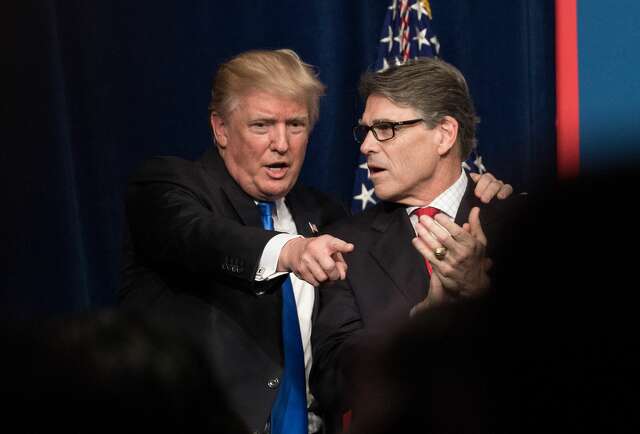Author: Elizabeth Ouzts Published: 2/25/2020 Energy News Network

Photo illustration of the Duke Energy website.
As neighboring states inch toward more electric competition, North Carolina takes it slow.
The South Carolina House of Representatives just took the first step toward loosening monopoly utilities’ grip on the state’s energy market.
Virginia lawmakers are exploring whether to expand competition in the commonwealth to encourage more renewable energy.
In between the two, North Carolina is taking it slow.
Despite growing frustration across the political spectrum with Duke Energy’s rising rates and meager clean energy plans, there’s no clear path to ending the 115-year-old utility’s monopoly outright.
Experts caution it would be a huge political, technical, and bureaucratic feat, and it wouldn’t guarantee more clean energy or greater consumer power in and of itself. Many say the first step is a comprehensive study to determine how and whether competition would achieve those goals — but even that isn’t imminent in an election year with a part-time legislature.
“We need to do something. It’s time to look at a change,” said Rep. John Szoka, a Republican from Fayetteville who chairs the North Carolina House energy committee. But, he stressed, “what we change would have a huge impact, so we need to be deliberate in what we do.”
‘They’ve just been stonewalling’
Like many states, North Carolina flirted with deregulation at the start of the century, then recoiled. In April 2000, a study commission of legislators and other stakeholders unanimously recommended limited retail and wholesale competition. Then, the California deregulation crisis blew up: Price gouging and speculation on the wholesale market eventually made its way to the retail market. Ratepayers saw rolling blackouts, and their bills double or even triple.
“California imploded,” said Richard Harkrader, the founder of Carolina Solar Energy and a member of the study commission. “People overnight soured on this whole idea of deregulation.”
Charlotte-based Duke has since merged with the state’s other major electric monopoly, Raleigh-based Progress Energy. Today, the company is one of the nation’s largest electric suppliers, with a hand in virtually every electron made, distributed, and sold in North Carolina. It produces the vast majority of the state’s electricity — most of it from coal, gas, and nuclear. It serves about 3.4 million homes and businesses directly, and another 1.6 million by selling electricity wholesale to nonprofit rural co-ops and municipal utilities.
Almost everywhere, Duke controls distribution and transmission; where it doesn’t, it still has a footprint. In the northeast corner of the state, where Virginia-based Dominion Energy delivers electricity and another entity controls transmission, Duke subsidiary Piedmont Natural Gas provides gas service, as it does to about three-fourths of the state’s counties.
With a few narrow exceptions, third-party electricity sales are prohibited; solar companies can’t erect panels and sell the output to anyone other than a regulated utility. And they can’t sell their power unless they’re connected to a grid run almost exclusively by Duke.
Thanks in large part to favorable state rules under the federal Public Utility Regulatory Policy Act, or PURPA, independent solar developers have gained a sizable foothold here. They own the vast amount of North Carolina’s solar power capacity — the second most in the country.
But they and Duke are at loggerheads, with the utility introducing new tests and surcharges for grid connections that have delayed projects from coming online. A 2017 law designed to break the logjam has mostly fallen short: Solar farms are still waiting to connect under the old PURPA scheme, delaying a new competitive bidding program that was supposed to take its place.
“They’ve just been stonewalling,” Harkrader said of Duke. “There’s really not much solar being built now. Most everybody, including my company, are now working outside of North Carolina.”
Large electricity consumers seeking to meet aggressive clean energy goals are also at Duke’s mercy since they can’t buy renewable energy directly. Authors of the 2017 law also tried to solve this problem, but a green tariff and solar panel leasing program have drawn lackluster participation to date.
Customers of all sizes also question Duke’s steadily increasing bills, especially to cover coal ash cleanup and a multibillion-dollar grid improvement plan. Across the state, hearings are underway now to debate Duke’s second proposal in three years to raise rates. “Most people believe they don’t have any say or recourse when it comes to their ever-growing electric bill,” said Donna Chavis, senior fossil fuels campaigner with Friends of the Earth.
On top of these complaints, many critics say Duke’s power generation plans are making the climate crisis worse. The company touts a midcentury carbon neutrality goal but plans to build a dozen new gas units and derive just 8% of its electricity sales from renewable power in 2034. Along with Dominion, Duke is a major owner of the Atlantic Coast Pipeline, the 600-mile fracked gas project now held up by court challenges.
No silver bullet for competition
Across the political divide, reformers say these symptoms stem from the underlying problem of Duke’s monopoly. Yet Conservatives for Clean Energy, the Energy Justice North Carolina coalition, and many energy experts agree: There’s no silver bullet for exactly how to relax the company’s control on the market.
The most consensus is for wholesale competition, in which the state’s co-ops and large energy consumers could buy from the power producer that delivered the lowest price or cleanest electricity. But how to enable such competition is up for debate.
One way is for North Carolina to join or create a regional transmission organization or an independent service operator. Overseen by the Federal Energy Regulatory Commission, RTOs and ISOs manage transmission and access to the electric grid and allow competition on the wholesale market between power producers.
The small corner of North Carolina served by Dominion is already in an RTO called PJM, which includes Ohio and Mid-Atlantic states. The state’s only operating wind farm is in PJM territory, allowing it to supply renewable electrons to Amazon for data centers outside North Carolina.
But PJM has drawn criticism, since its rules generally favor gas and uneconomic coal plants and discourage new solar and wind farms. According to the Natural Resources Defense Council, just 25% of new power plants built in the PJM region in the last decade were solar, wind, or other renewables — the lowest of any RTO or ISO in the country. “It’s not at all clear that Duke joining PJM would result in a cleaner grid for North Carolina,” said Gudrun Thompson, senior attorney with the Southern Environmental Law Center.
Creating a new organization also has skeptics. Advocates are wary of ceding regulatory authority to a federal agency appointed by President Donald Trump, especially now that the state’s utilities commission consists of all but one person appointed by Gov. Roy Cooper, a Democrat. Case in point: The Federal Energy Regulatory Commission just established new rules for PJM’s capacity market that further penalize renewable energy.
“Now, a bunch of states are considering leaving the [PJM] capacity market because it would force them to double pay if they want to move forward on clean energy,” said David Rogers, the southeast deputy regional director for the Sierra Club’s Beyond Coal campaign. “Markets are only as good as rules and the oversight that governs them.”
Another method for permitting wholesale competition is an energy imbalance market, a voluntary collection of utilities and other system operators in which real-time kilowatt-hours, not power plants, are bought and sold as needed. In the western United States, the model has allowed solar and wind energy that would otherwise be curtailed in one state to be sold in another — fostering the growth of renewables and lowering prices. “It’s a really interesting way to inject some competition into an otherwise monopoly regulated structure,” Thompson said.
In a variation on the energy imbalance market, utilities could share reserve margins, the capacity to produce power when demand is at its highest conceivable peak. “That way, not everyone needs to be at the inflated reserve margins that they all claim they need,” Rogers said. “Duke and Dominion and Southern Company could just make that agreement right now.”
The final most-discussed option for wholesale competition is an all-source procurement system. Duke would maintain its control of the grid and distribution, but rather than plan for and build new generation sources to meet power needs, the company would issue a request for proposals for a certain amount of capacity from a variety of “fuels” such as solar, battery storage, and gas. In Colorado two years ago, this scheme produced the lowest prices of storage combined with wind and solar the nation had ever seen, Utility Dive reported.
‘We just don’t have the time’
Retail competition is another matter. Most open to the possibility is Energy Justice North Carolina, the coalition of more than a dozen community, state and national environmental groups organized around ending the Duke monopoly. They see retail competition as a potential avenue for the historically marginalized to take control of their energy production.
“There’s no doubt that there will be a transition toward a more regenerative economy and away from an extractive economy,” said Connie Leeper, organizing director with coalition member NC WARN, an outspoken Duke critic. “Will that be a just transition?”
But others worry complete deregulation could allow energy companies to prey on vulnerable customers. “It could potentially increase clean energy penetration,” said Peter Ledford, general counsel for the North Carolina Sustainable Energy Association, “but retail competition comes with so many consumer-protection concerns.”
Still, to a person, everyone interviewed for this story said the first step toward competition was not deregulating one sector of the market in a particular way. Instead, it’s a comprehensive study of all the options, including what has worked in other states.
“We have to all go into this with an open mind,” said Mark Fleming, the head of the Conservatives for Clean Energy. “It’s not a real process if you go into it with an outcome already pre-planned.”
Fleming’s group is also active in South Carolina, where the House just passed a bill to begin an exhaustive study of deregulation. But that sort of analysis looks further away in North Carolina.
In a clean energy plan connected to Cooper’s executive order on climate, the state’s Department of Environmental Quality recommends the legislature authorize a study of the costs and benefits of retail and wholesale competition. The study is listed as a “medium or long term” item, meaning it could be completed as soon as one year or as long as five years from now.
Rep. Larry Strickland, a Republican from Johnston County, has introduced a bill to study the RTO route. But it didn’t get a hearing in last year’s long session, and most observers doubt it will move in the short session scheduled to begin in April.
In an email, Strickland acknowledged it may be difficult to pass his bill this year given time constraints. But, he continued, “I will continue to fight for a study to examine if a Regional Transmission Organization is a market reform that will save ratepayers across North Carolina money.”
Asked about the push for deregulation and Strickland’s bill in particular, Duke didn’t take a position. But, spokesperson Grace Rountree stressed in an email, “North Carolina is a national leader in clean energy and providing customers with reliable, increasingly clean electricity at prices lower than the national average.”
She added, “we generally welcome balanced studies that look at ways to improve public policy impacting our customers and Duke Energy looks forward to working collaboratively with stakeholders through the legislative process.”
From Rep. Szoka’s point of view, that process won’t happen until 2021. “We’re talking about a huge change in how you regulate electricity in this state,” he said. “In the short session, in an election year, we just don’t have the time.”






































